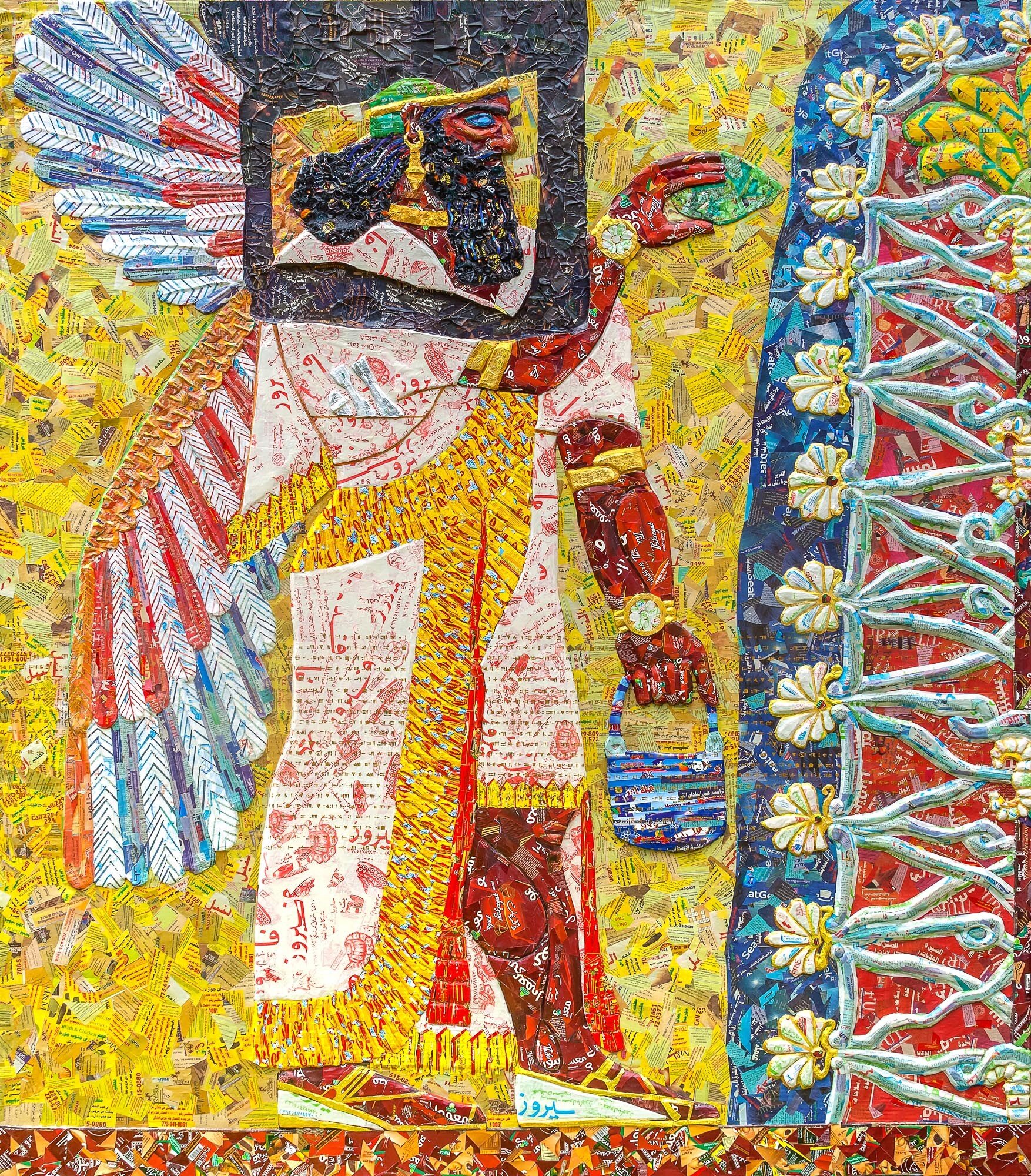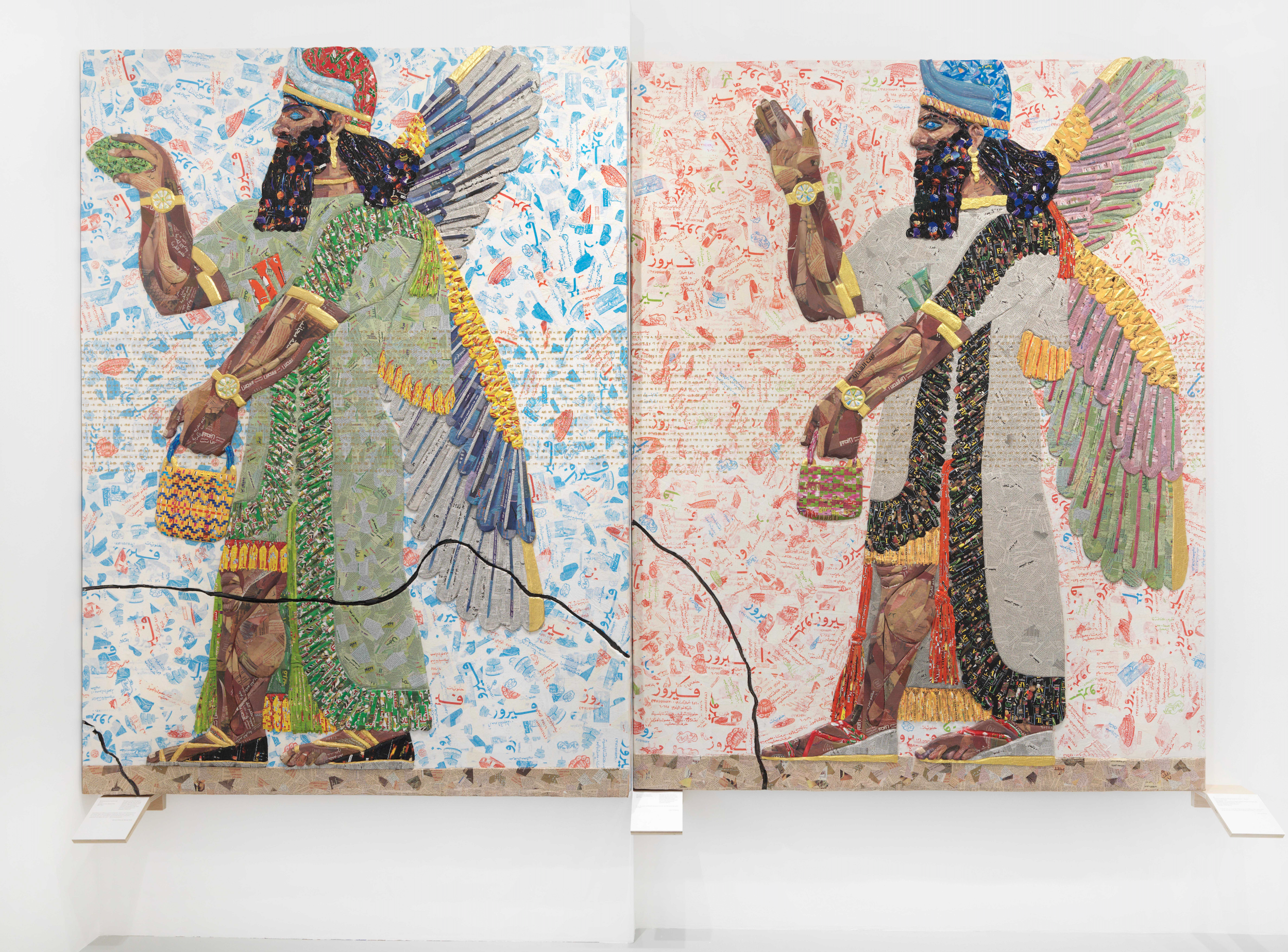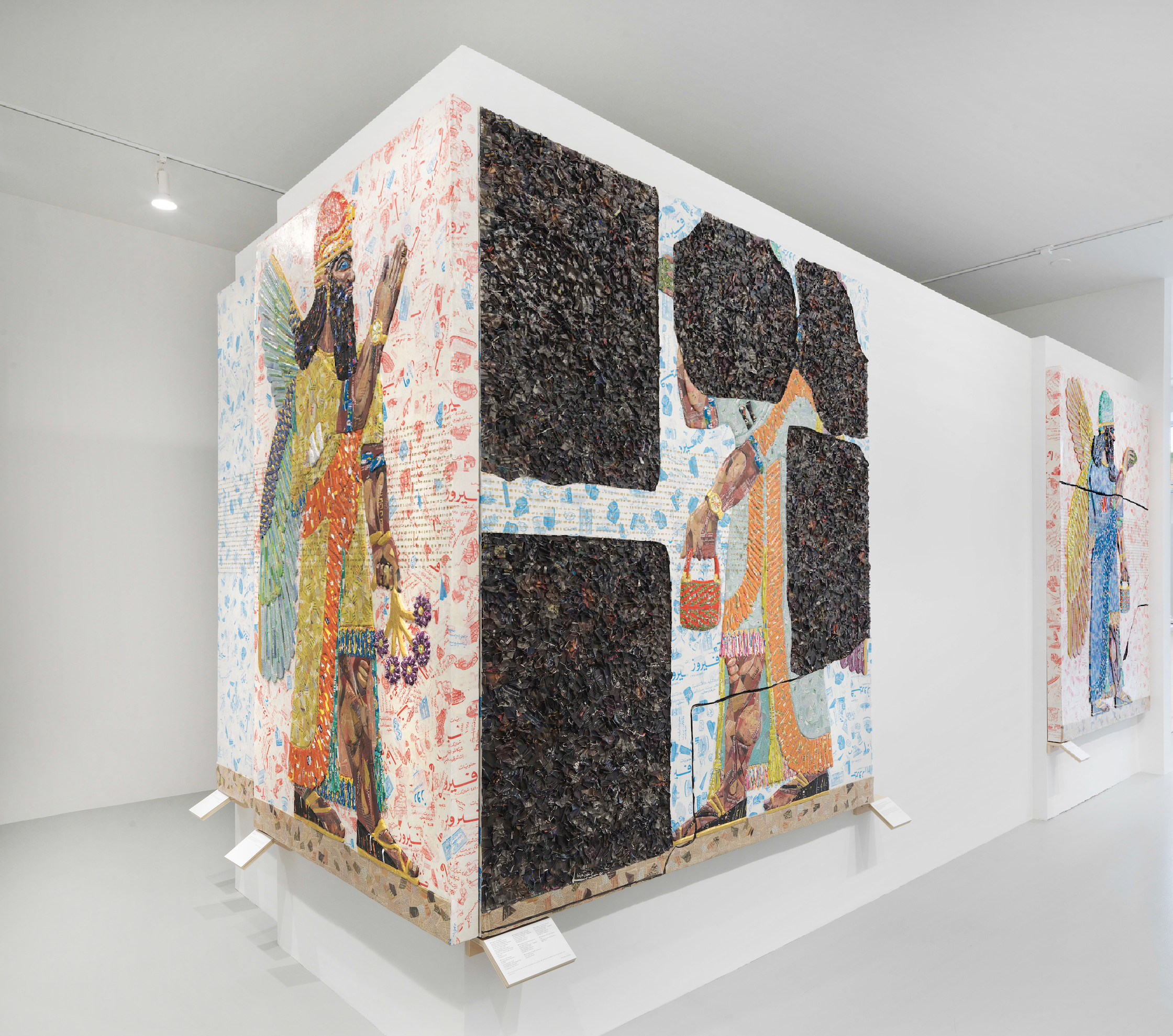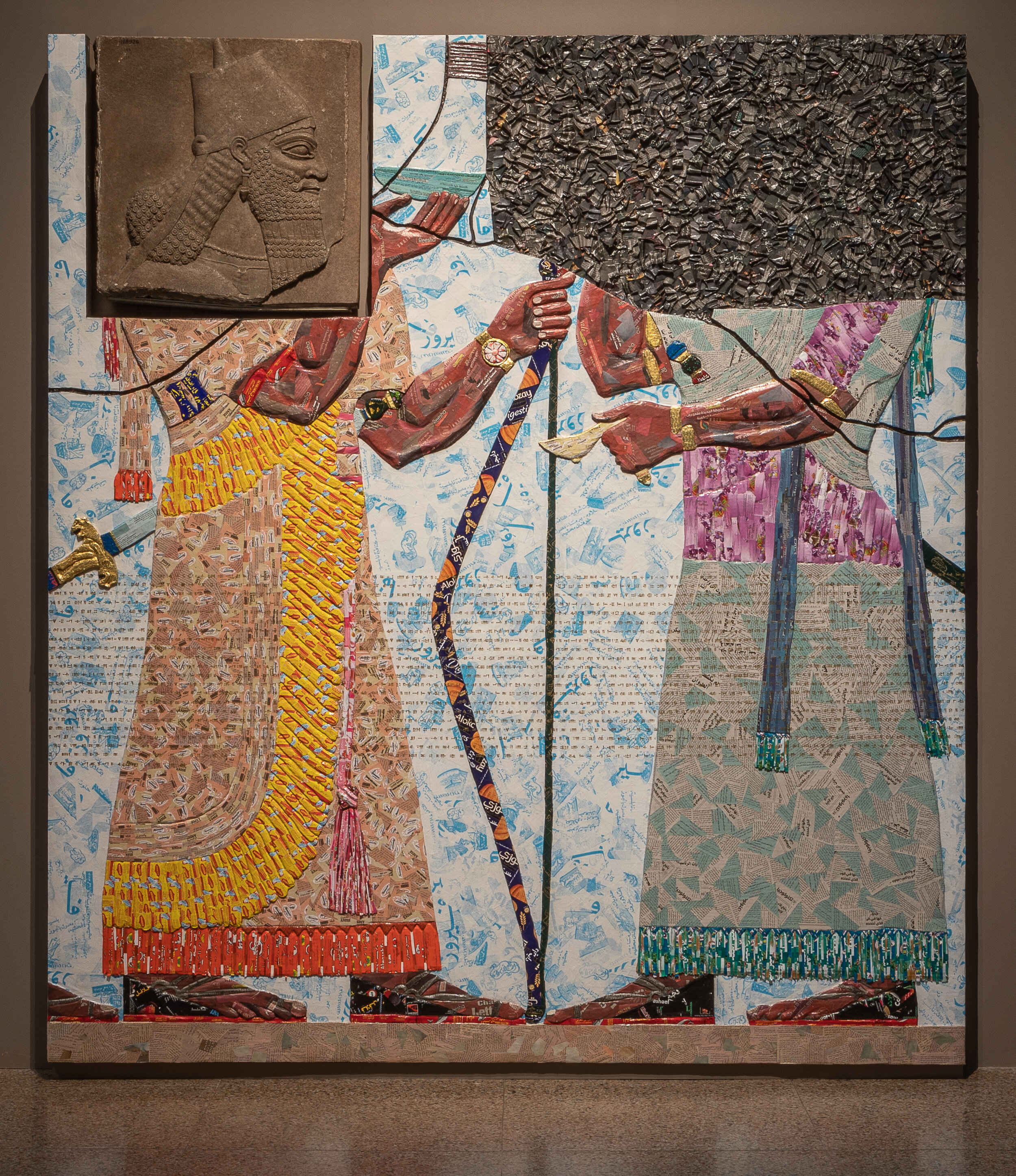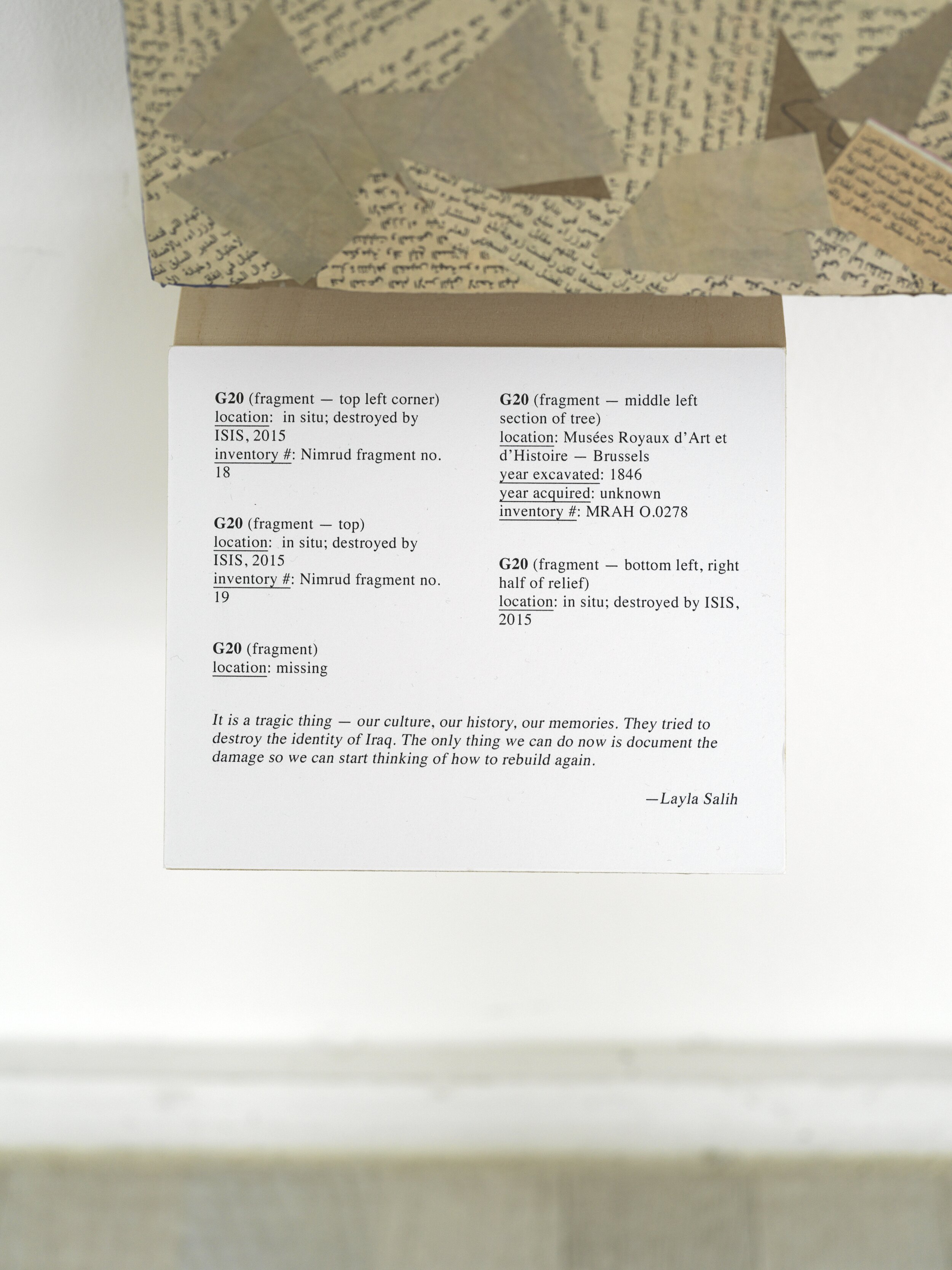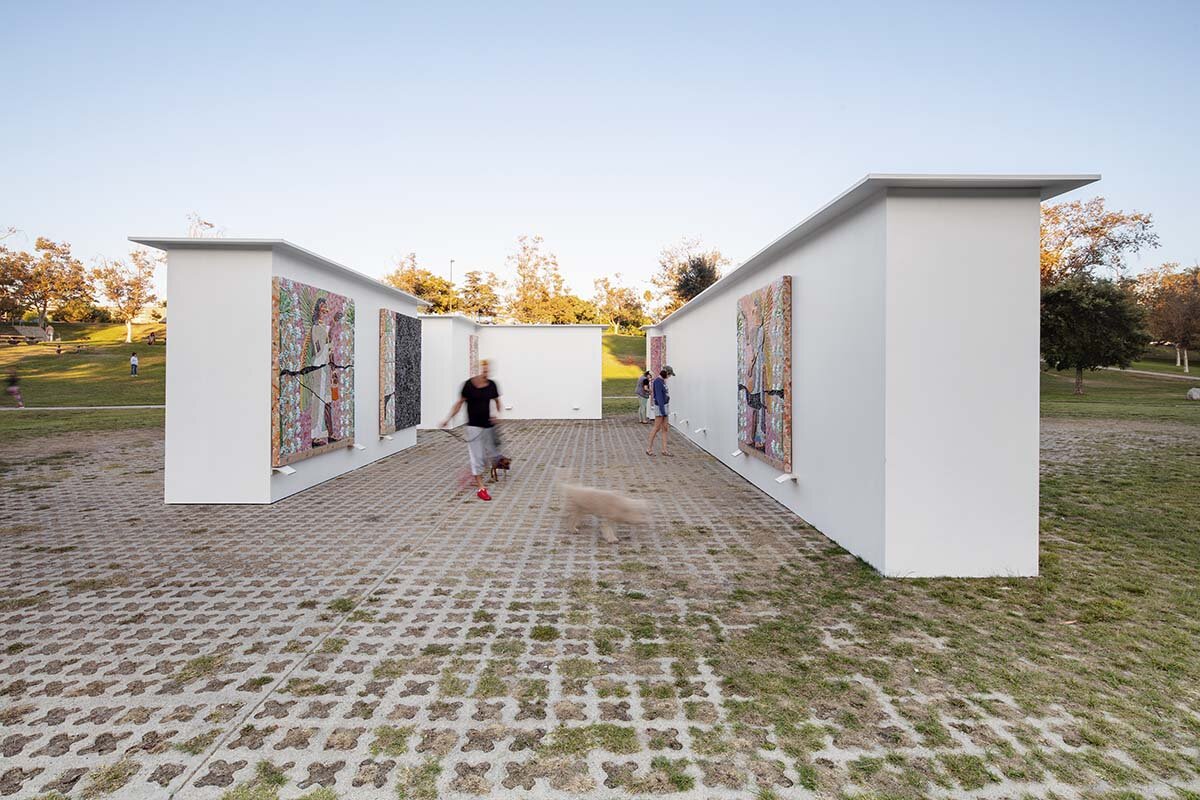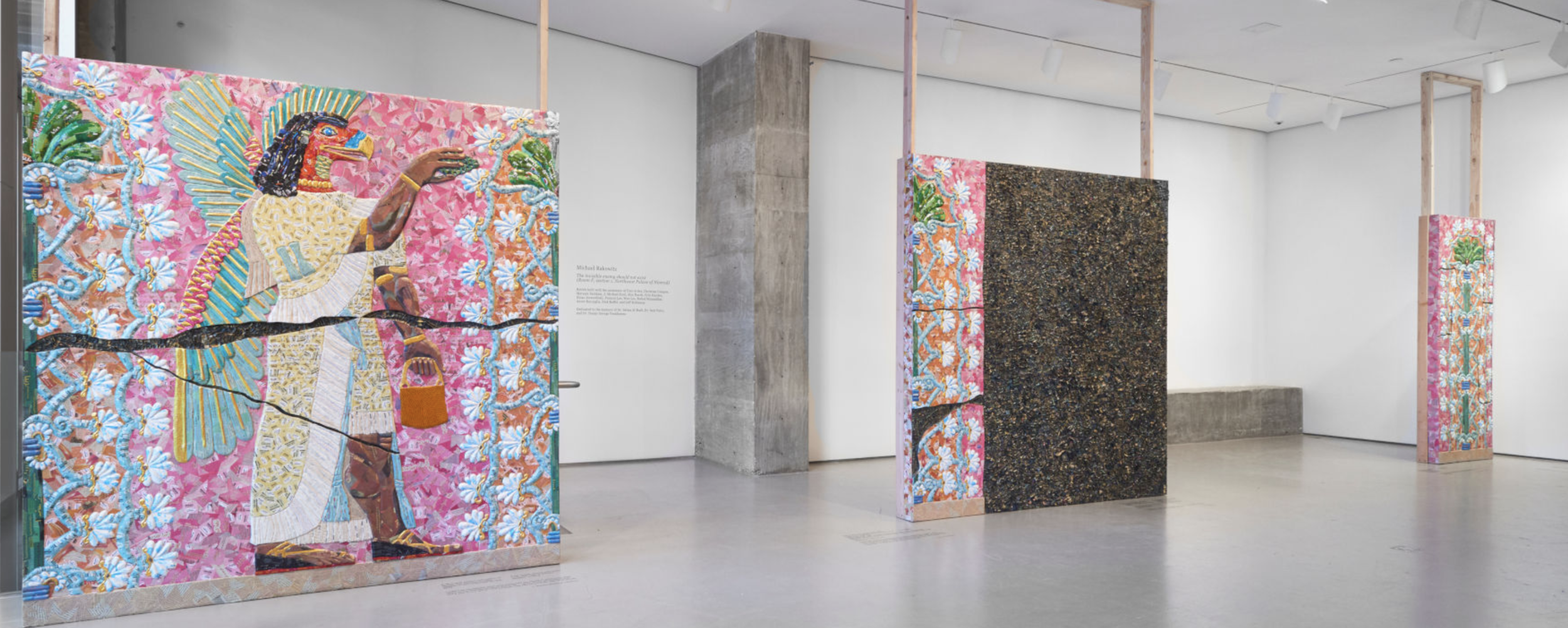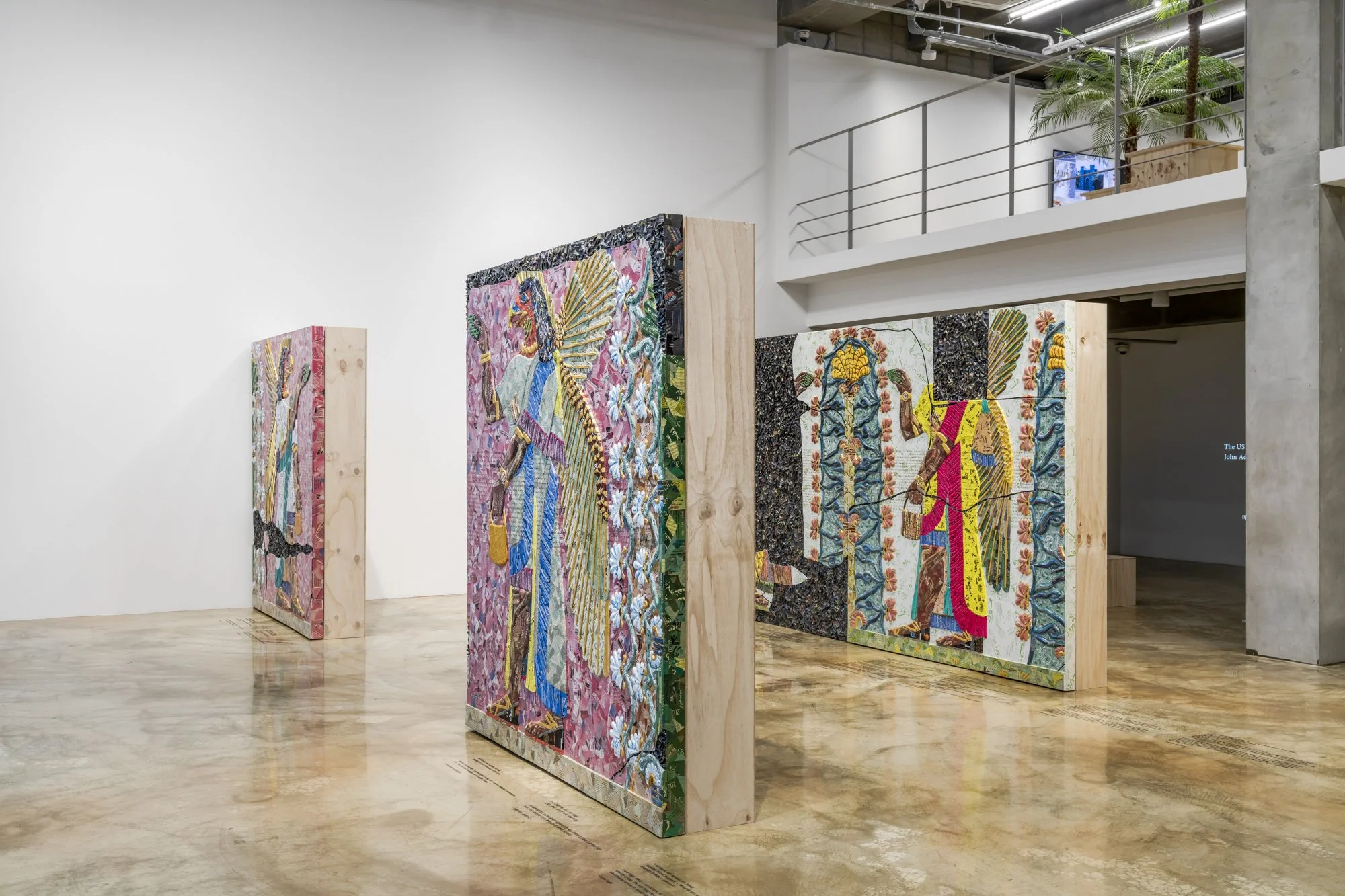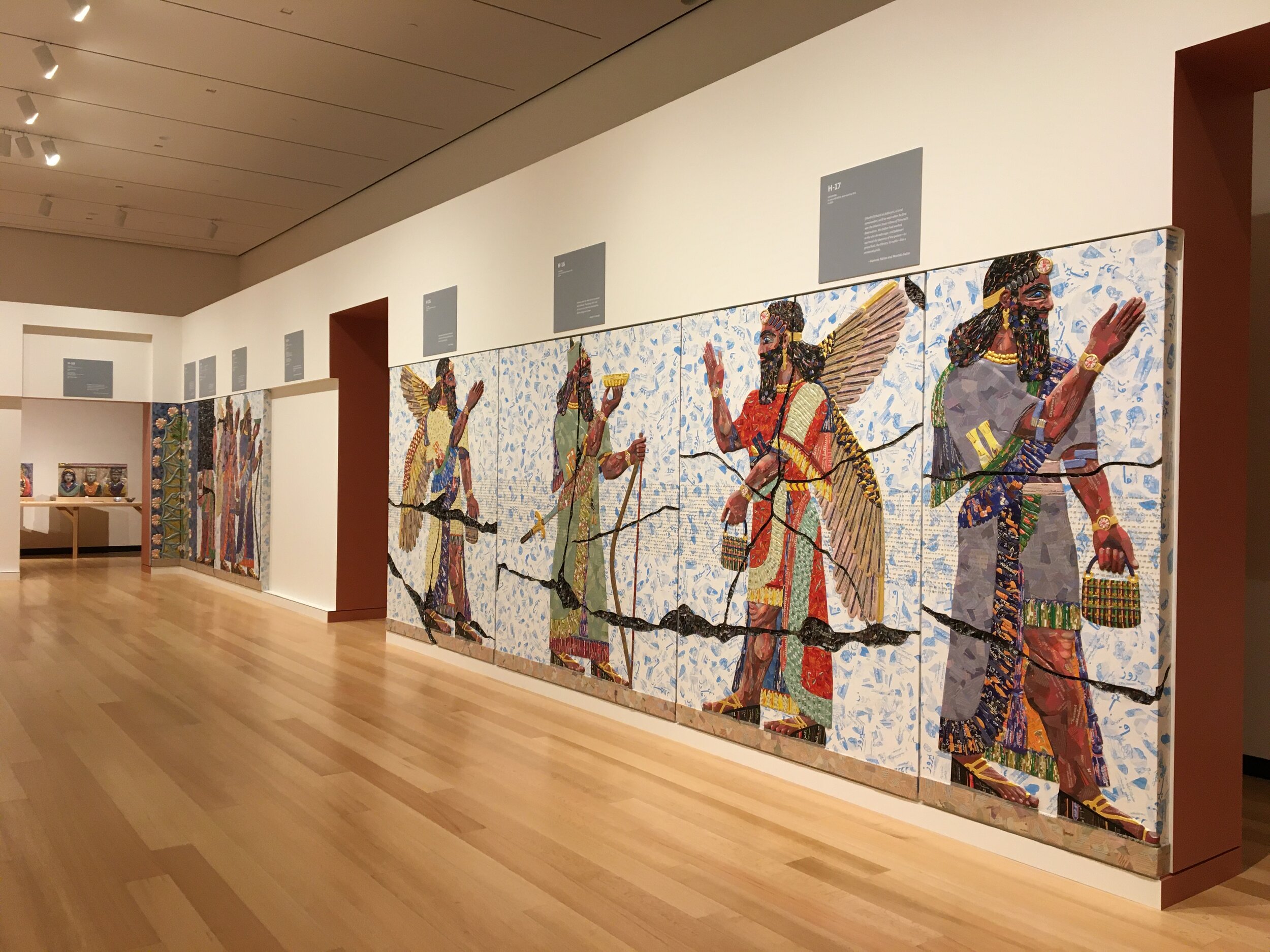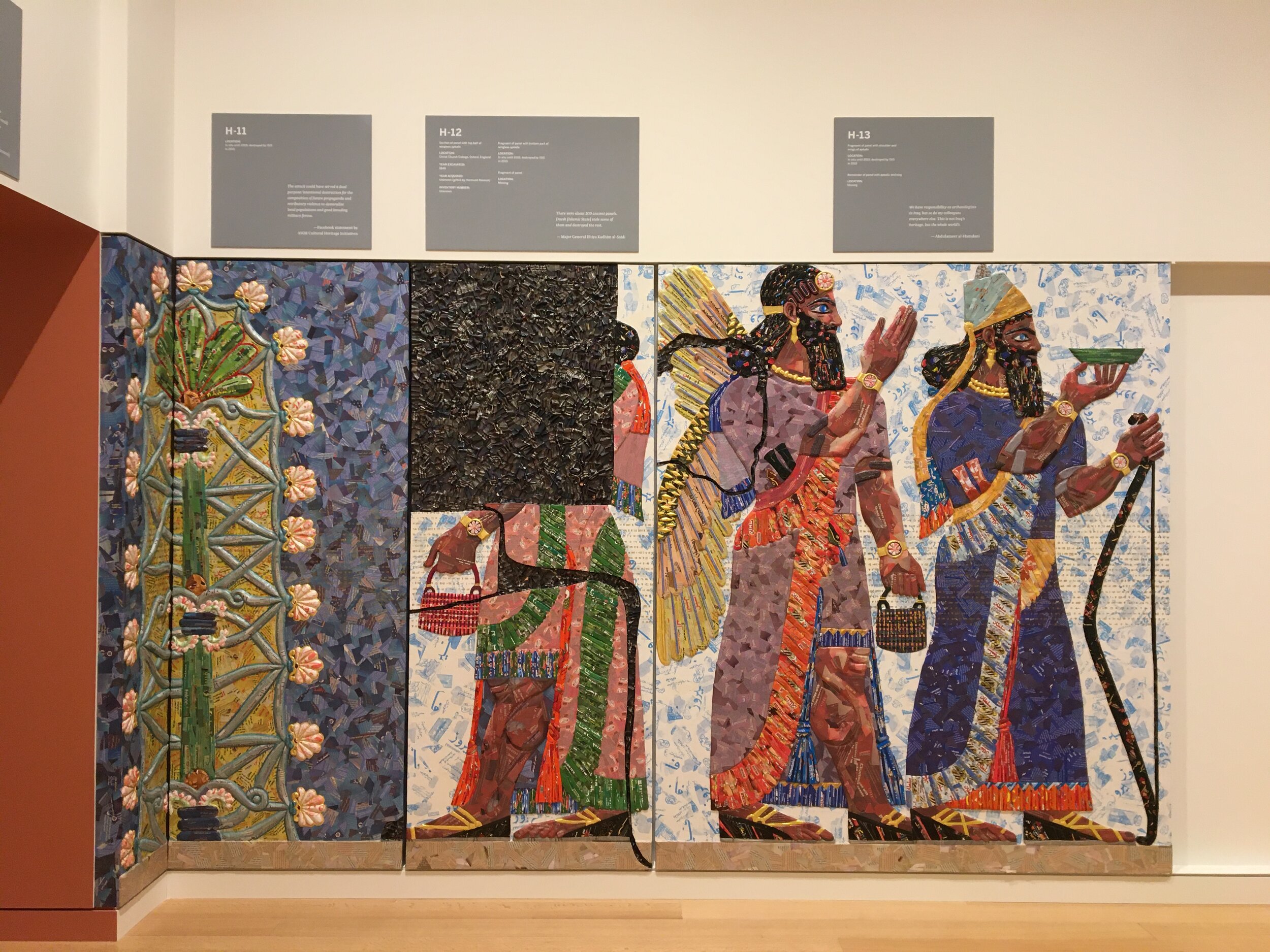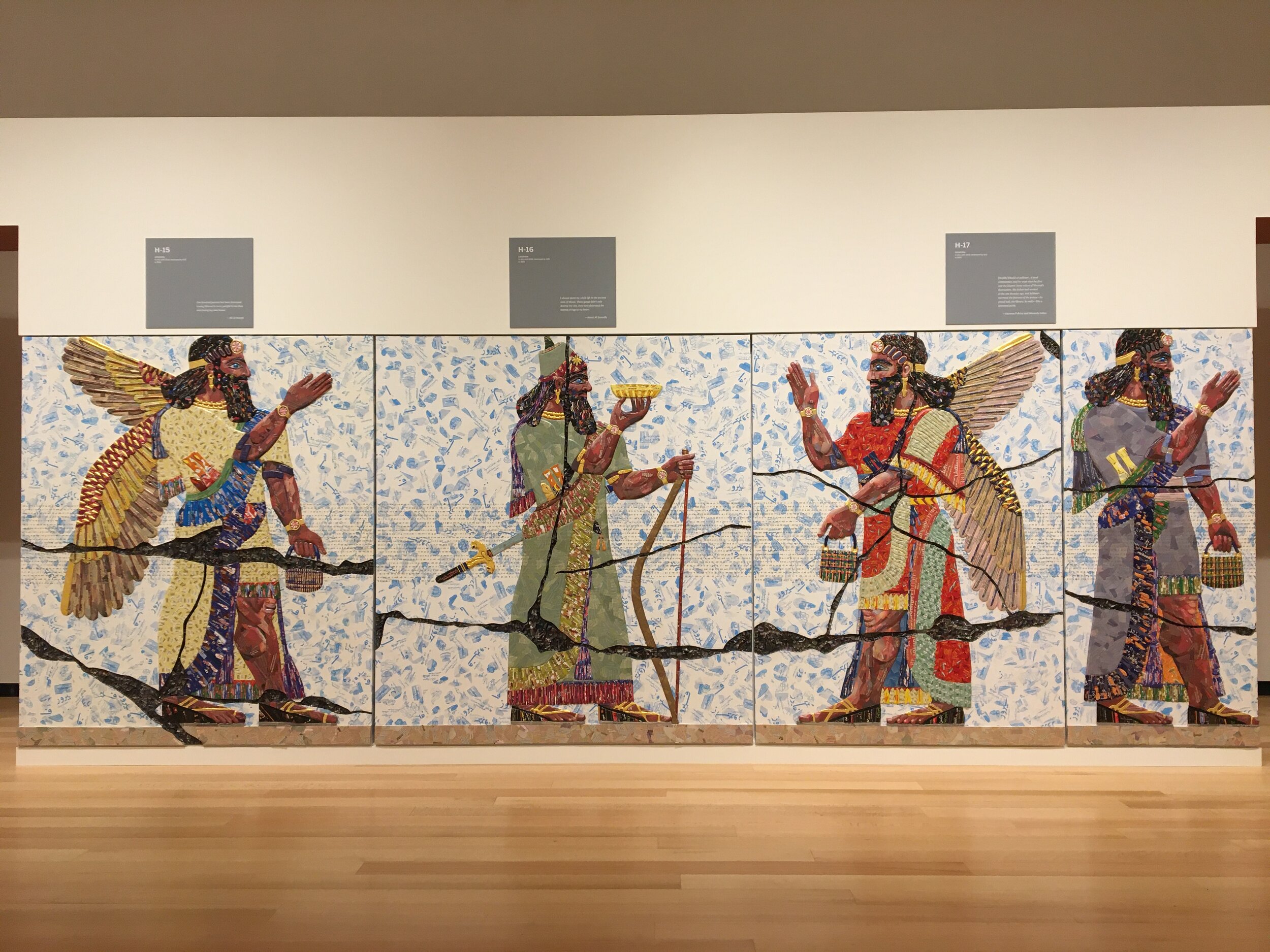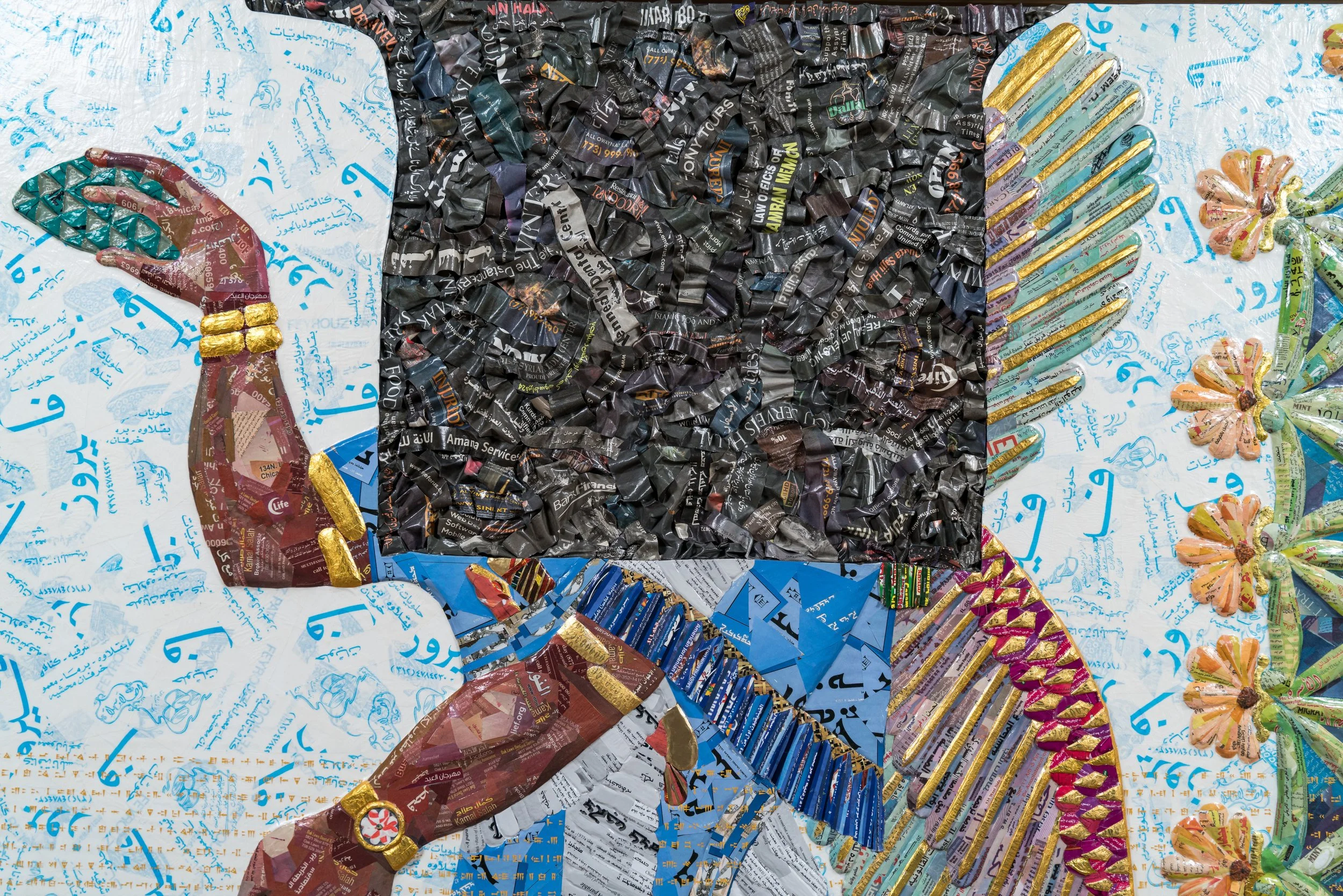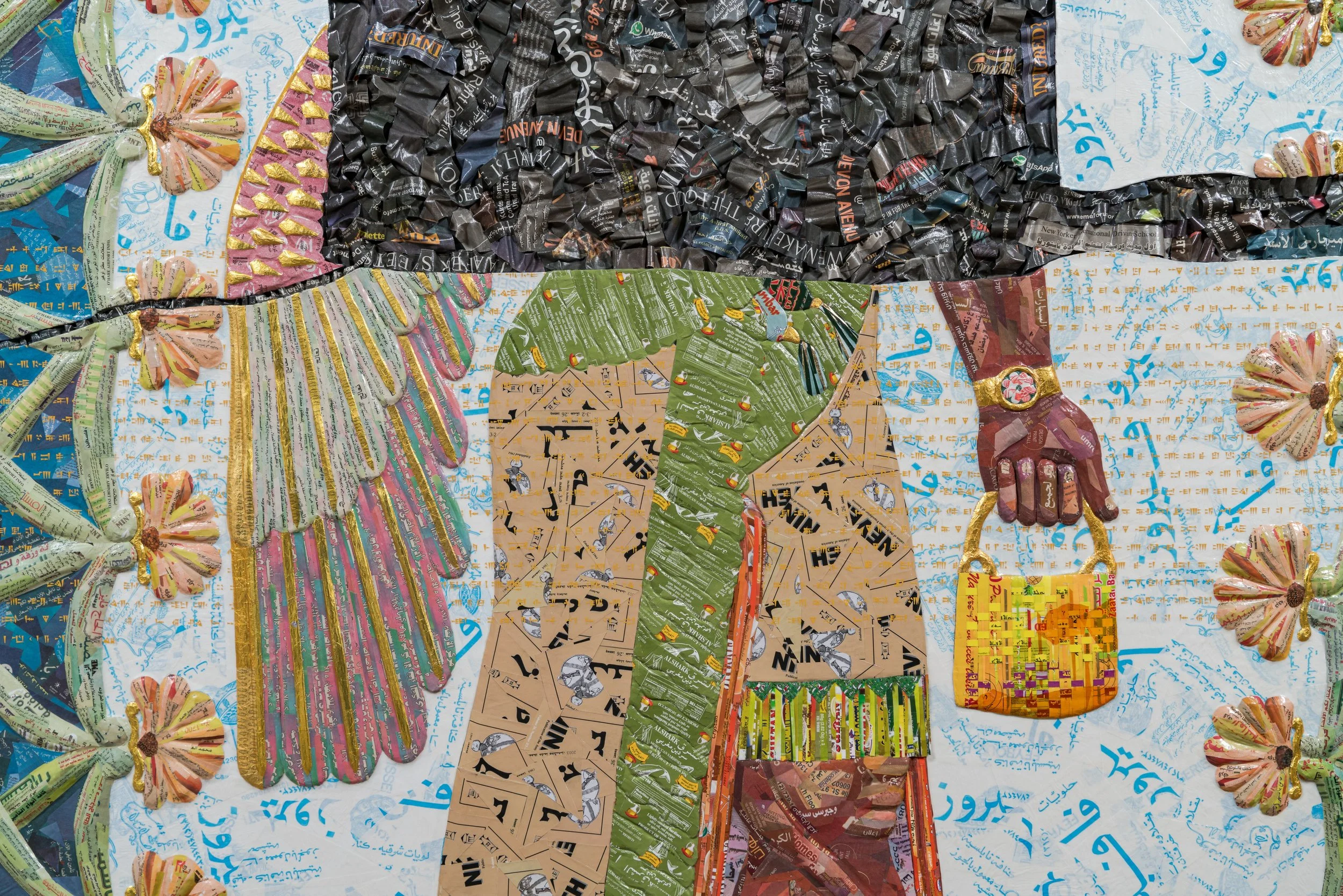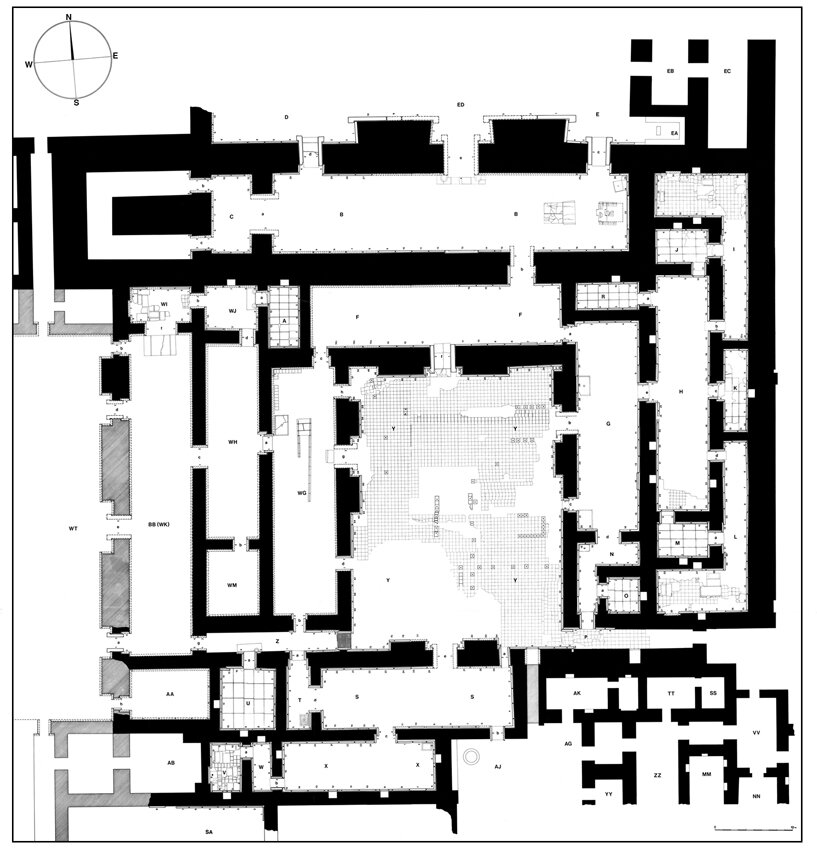The invisible enemy should not exist (Northwest Palace of Nimrud)
2018 - ongoing
Arabic newspapers, food packaging, cardboard relief sculptures on wood panel, museum labels
Built with the assistance of:
Elizabeth Allen-Cannon, Talal Khalid Al Najjar, Emily Atac, Yani Aviles, Daniel G. Baird, Larissa Borteh, Christian Campos, Hasani Cannon, Noura Elmeligy, Maryam Faridani, Jae Ford, Alyx Harch, Erin Hayden, Elnaz Javanidizaji, Frances Lee, Wen Liu, Nour Malas, Bishal Manandhar, Noël Morical, Ingrid Olson, Annie Raccuglia, Nick Raffel, Jeff Robinson, Malte Stiehl, Deniz Türkoğlu, Neal Vandenbergh, Aleksandra Walaszek, Zachary Sun, Zespo
Dedicated to the memory of Selma Al-Radi, Sam Paley, and Dr. Donny George Youkhanna
The invisible enemy should not exist (Northwest Palace of Nimrud) constructs reappearances of historically looted and recently destroyed relief sculptures that lined the walls of the ancient Assyrian Palace of Nimrud (present day Mosul, Iraq).
Nimrud gallery
